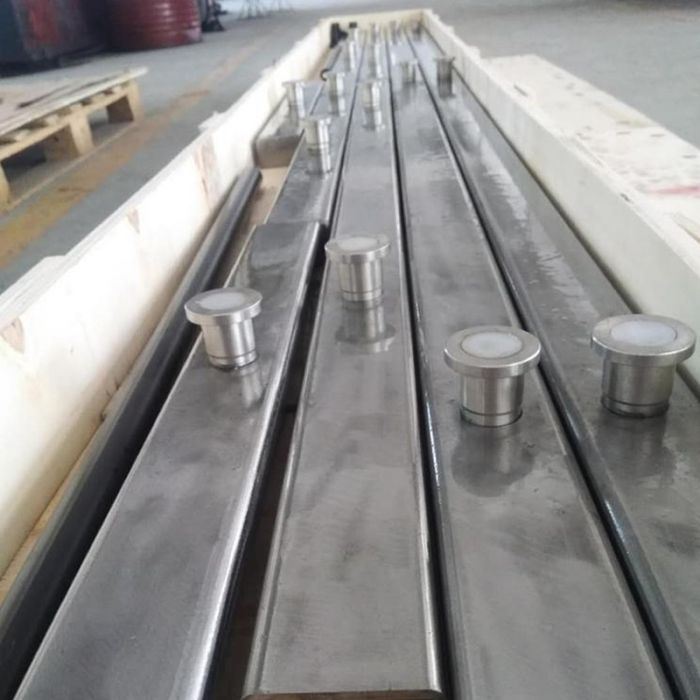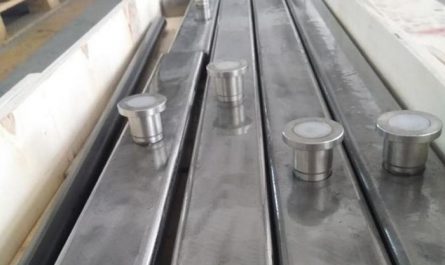[Abstract] the construction period of the housing industrialization base is long, and the one-time investment cost is large.
For the areas where the development of housing industrialization is relatively backward, the production mode of PC components in the industrialization base is greatly restricted in the third and fourth tier cities.
Adopting nomadic production mode to produce and construct prefabricated components can solve the above problems.
This mode can also reduce the transportation cost and complete the production task of prefabricated components with the best economic benefit and the minimum equipment cost.
The production advantages and management requirements, production planning and deepening of production contents of nomadic prefabricated components are described in detail, and production cases are introduced.
1) production advantages and management requirements of nomadic prefabricated components 1) for areas where the local government requires that prefabricated components must be used for construction, the nomadic production method is adopted for self-production of prefabricated components, which saves costs compared with external purchase.
The progress of nomadic production prefabricated components can be adjusted according to the site, which is more suitable for high turnover projects.
2) For the third and fourth tier cities where the local government requires the use of prefabricated buildings, the nomadic production of prefabricated components can solve the problems of insufficient supply of external procurement and high transportation costs.
3) under the current market situation, the nomadic production mode is flexible in layout and requires low one-time input cost for the component production base, which is more suitable for the market demand of prefabricated buildings during the transition period.
4) the production of nomadic prefabricated components shall have the production process facilities and test and detection conditions to ensure the product quality requirements, and establish a sound quality management system and system as well as an information management system with traceable quality.
Before production, the design, production and construction units shall be organized to conduct disclosure and joint review of design documents.
If necessary, the processing details shall be prepared according to the approved design documents, proposed production process, transportation scheme, lifting scheme, etc.
A production plan shall be prepared, which shall include production plan and process, mold plan and plan, technical quality control measures, finished product storage, transportation and protection plan, etc.
2.
Nomadic production planning of prefabricated components 2.1 splitting and design funding requirements 2.1.1 splitting principle 1) splitting of components does not affect the safety of the structure.
After splitting and installation of components, the safety of the whole structure is not affected.
The splitting position is convenient for anchoring, and there are no safety and quality hazards.
2) The site construction is convenient and convenient for hoisting.
After the prefabricated components are disassembled, the construction of the cast-in-situ structure is more convenient, the prefabricated components are easy to be hoisted, and the reinforcement method of the anchor position is easy to operate.
3) The lifting quality of prefabricated components is moderate, and the lifting cost of tower crane is not increased.
The quality of prefabricated components meets the lifting requirements of tower crane at this position, and the model of tower crane is not adjusted, and the lifting cost is not increased.
4) the size of a single prefabricated component that is convenient for transportation should not be too large.
General transport vehicles should be considered as far as possible to facilitate transportation and reduce transportation costs.
2.1.2 design funding requirements 1) types of components planned to be prefabricated in the project.
2) Planned split location of prefabricated components.
3) determine the maximum lifting capacity of each split component according to the positional relationship between each component and the tower crane in the general layout and the model of the tower crane.
The design determines whether core pulling measures are taken for prefabricated components according to the lifting capacity.
2.2 selection of on-site prefabrication and outsourcing of components because there are many types of prefabricated components in the project and the characteristics of various prefabricated components are different, not all prefabricated components are feasible and economical to be prefabricated on site.
According to the characteristics of all prefabricated components on site, they shall be selected differently.
2.2.1 site prefabrication type selection (see Fig.
1) 1) simple components with strong site versatility and large number can be used for all buildings, and simple components with large number of prefabricated components of this type in each unit shall be prefabricated on site.
The prefabrication of such components is difficult and the quality is controllable.
The on-site prefabrication can save costs, such as prefabricated balcony, prefabricated air-conditioning panel, prefabricated floating window, etc.
2) the number of single buildings is small, but the common components of each building and project can be used.
The number of component molds of this type can be determined according to the site progress and demand.
The molds can be used in multiple projects with low cost, such as prefabricated stairs and prefabricated fire partition boards.
2.2.2 type selection of prefabricated components that can be considered for outsourcing: due to the individual circumstances of the project, there are some special-shaped components, the total number is small and the projects are not universal, so outsourcing can be considered at this time.
The site prefabrication of this type of special-shaped members is difficult, the quality is difficult to control, the versatility is poor, the mold can not be reused, and the site prefabrication cost is high.
2.3 nomadic production site planning 2.3.1 site area determination nomadic production site area (P) is related to the following relevant factors: plane projection area (P1), component production site area (P2) and component stacking site area (P3) of the same batch of prefabricated components.
1) The plane projection area (P1) of the same batch of prefabricated components is generally the maximum plane projection area of all prefabricated components in one standard floor of all buildings under synchronous construction.
The plane projection area of each component is: the plane projection area of prefabricated stairs, that is, the area when the stairs are placed parallel to the ground; The plane projection area of all wallboards, i.e.
the floor area of wallboards placed on the ground; The plane projection area of the louver, i.e.
the floor area of the facade of the louver on the ground.
2) Component production site area (P2) the production site area required for the production of the same batch of prefabricated components includes the placement area and the reinforcement processing area.
3) component stacking area (P3) is used for stacking the prefabricated components that have been processed.
In the case of flow construction without considering on-site storage, the area of component stacking site (P3) is equal to the area of component production site (P2), that is, twice the plane projection area (P1) of the same batch of prefabricated components.
Area of the whole nomadic production site (P) = floor area of component production site (P2) + area of component stacking site (P3) × 1.25 (reduction coefficient of roads in the site)..



